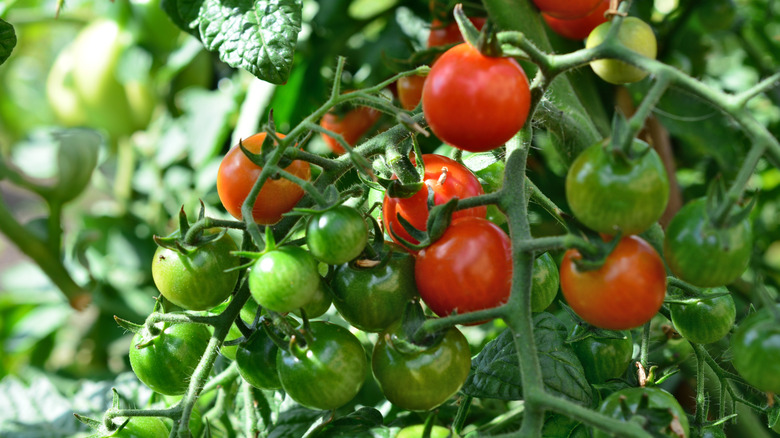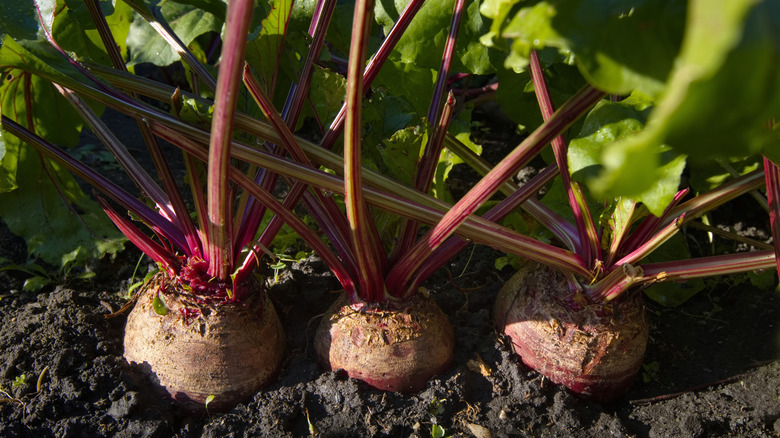The Overlooked Veggie You Should Plant With Tomatoes For A Harvest Full Of Flavor
Growing certain plants in close proximity is one of the most effective ways to get the most out of your vegetable garden. Companion planting has several benefits — it helps reduce pests, encourages pollination, and improves soil health. Tomatoes, in particular, benefit greatly when planted alongside herbs and veggies like basil, asparagus, and lavender. The basil improves the taste and deters pests, while asparagus prevents fungus and nematodes (in return, tomatoes produce solanine, which repels the asparagus beetle). As for lavender, the aromatic flowers keep flying pests away and attract bees for pollination. These partnerships are known to make your harvest healthier and more abundant. But one companion plant is often overlooked in this lineup: beets. Despite their low profile, beets can form a surprisingly beneficial partnership with tomato plants. The result is a healthier harvest, and a healthy harvest means more flavor. Essentially, good growing conditions allow the crops to develop natural sugars and carotenoids like beta carotene, which results in better flavor.
Beets and tomatoes also enjoy similar growing conditions, which makes them ideal companion plants. They both prefer around six to eight hours of sunlight a day and grow best in well-draining, fertile soil. Plus, both require 1 to 2 inches of water a week. While tomatoes are warm-season plants and beets thrive in cooler seasons, you can still grow them in the same bed with the right timing and placement.
Why beets are the perfect vegetable to plant with tomatoes
Beets and tomatoes support each other in more ways than one. Tomatoes lend beets a hand on hot summer days, while beets help with the health of your garden soil and pest prevention. The foliage of mature tomato plants acts as a natural canopy, shielding beets from the scorching summer sun. This is a perfect example of nurse cropping in action. In turn, beet plants release compounds into the soil that repel common tomato pests like aphids and whiteflies. Plus, beet and tomato roots cover different soil levels. The shallow root systems of beets complement the deeper roots of tomatoes, minimizing competition for water and nutrients. On top of that, the leafy beet tops form a ground cover that acts as natural mulch, providing shade to the soil. This helps retain moisture while preventing weeds from popping up.
The most critical aspect of planting beets and tomatoes together is getting their timelines right. Beets are sown directly outdoors as early as four weeks before the last expected frost, while tomatoes are typically started indoors six to eight weeks before the last frost and transplanted after the danger of frost has passed. This means your beets will already be sprouting by the time your tomato seedlings go into the ground. Also, when you're transplanting tomatoes near beets, make sure to prune the lower branches so that the beet tops have enough room to grow. Keep plants about 8 inches apart, and water deeply in the evenings to make sure both root systems get what they need. With a little planning, the two crops can thrive together, resulting in a harvest as successful as the three sisters method.

